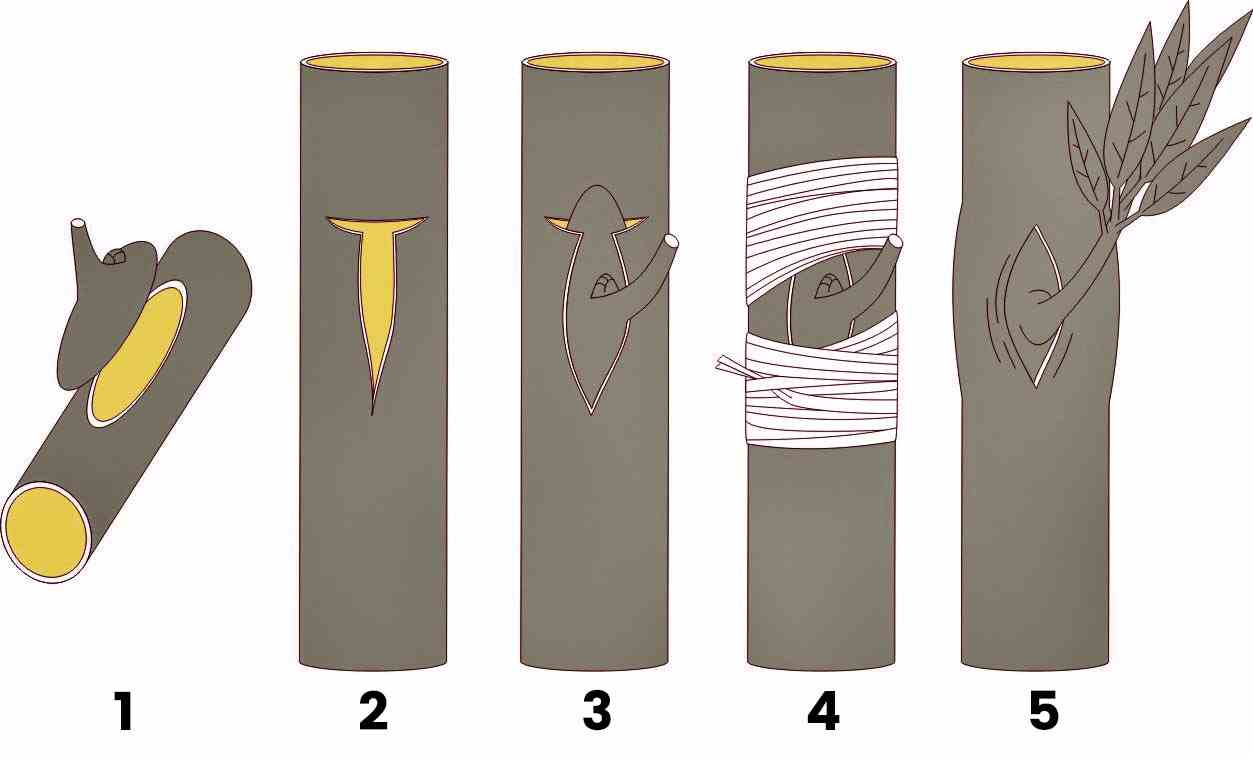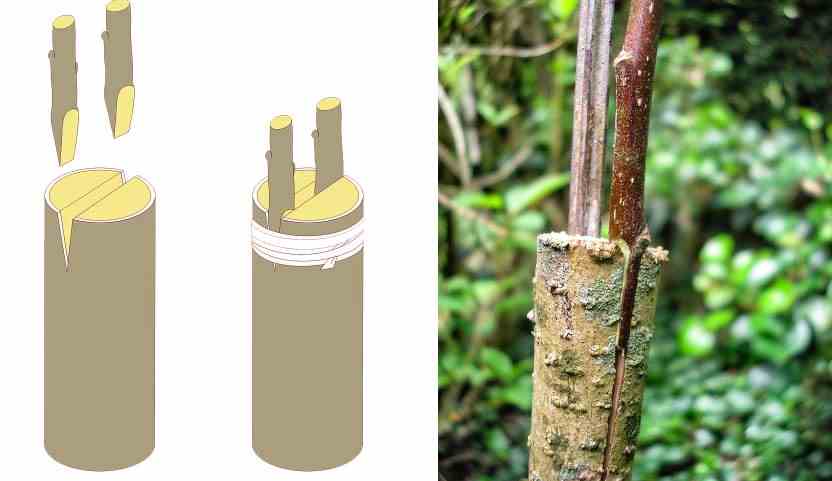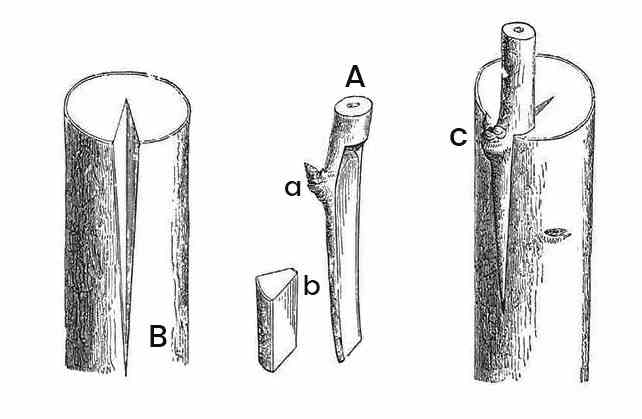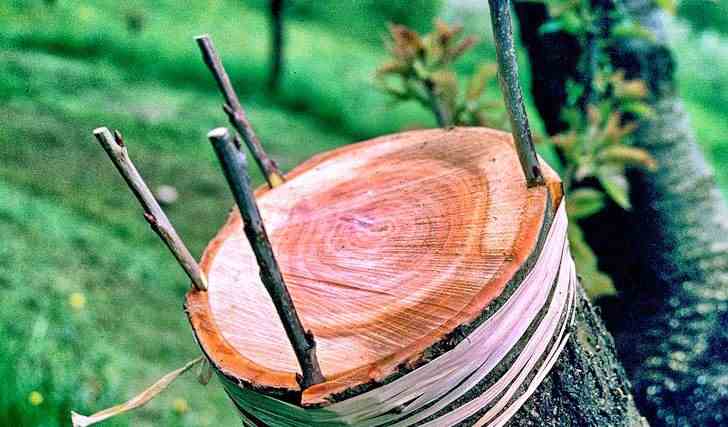Some preliminary advice
It must first be remembered thatan apple tree can only be grafted onto another apple tree. It is also important to choose the right moment to carry out this operation. Depending on the grafting method chosen, it will be done in spring or late summer.
Also remember to bring the adequate material. Indeed, you will need a grafter. This tool, whose appearance varies according to the method of grafting chosen, comprises a blade and, on the top of the handle, a spatula.
A little of grafting putty and one natural raffia roll will also be very useful, as well as small rubber bands.
The choice of rootstock
The transplant consists in a way of bring two plants into close contact. The one you want to see develop is called a graft, and the one on which it is implanted a rootstock.
The choice of this small shrub is essential to the success of the graft. If you want it to give a vigorous apple tree, you must choose a robust rootstock. At least if it is associated with a graft belonging to a less perennial variety.
If, on the contrary, the scion is very vigorous, a less robust rootstock will be preferred. Likewise, the rootstock must be healthy. If it is not in good health, it can transmit diseases to the graft.
These rootstocks are planted in the fall, about a year and a half before the transplant. The success of the transplant also depends on the quality of the grafts. They can be collected in summer or winter, but outside of frost periods.
The crest graft

The escutcheon graft is done in August, at a time when the sap is circulating less. We start first by removing their leaves from the scion and the rootstock. The graft is done on a smooth part of its trunk.
Then, using the grafting tool, we practice two slight notches, which form a T. You must then delicately lift the bark. It’s time to take the “crest”. It consists of an eye, that is to say a bud, itself associated with a leaf.
It’s time toinsert the graft into the notch. It must then be delicately tied with the raffia. To keep the graft in place, you can also surround the location of the graft with a small rubber band.
In single or double lunge: another method

It is a very old grafting technique. She gets In early spring, with grafts taken during the winter. Once again, the rootstock is stripped of its leaves using secateurs.
To practice the graft, it is then necessary to split the trunk of the rootstock, over a height of about 10 cm. A wedge is then introduced into the notch to prevent it from closing.
Preferably choose a graft with three eyes, or buds. It will be necessary cut the grafta little below the upper eye, and also below the lower eye.
You will have to do the same with another plugin. All you have to do is insert them into the slot. Use raffia to tie it all together and putty to apply to the wounds.
The English graft

The English graft is a fairly simple method that is practiced in the spring, when the sap is rising. It can even be done indoors. Here again, grafts taken during the winter preceding the transplant are used.
As with the previous technique, select grafts with three eyes. Their base must be pruned. There are various possibilities, such as bevel pruning, the main thing being that the size of the scion and that of the rootstock match.
In this way, the graft can be easily placed on the rootstock, the two parts then coinciding. All that remains is to tie the assembly together quite tightly. To do this, use raffia or rubber strips, specially designed for this purpose.
They offer an additional advantage, that of covering wounds with these plants.
An alternative technique: inlay grafting

This grafting method is practiced in March-April. In principle, it resembles cleft grafting. Again, the grafts used are collected in winter, in January or February.
There too, the graft will be cut under one eye, preferably beveled. This graft should measure about 10 cm. As in other grafting techniques, the rootstock must be topped.
As in the case of the cleft graft, a notch is made on the trunk of the rootstock. The essential difference with the cleft graft is that the notch is less important. The trauma suffered by the rootstock is therefore more measured.
As in other grafting techniques, it is then necessary insert the graft into the slot and tie it all together.
The crown graft

The crown graft is practiced in April or May, when the sap circulates in the rootstock. The scions are always collected in winter.
In order to prepare for the transplant, it is again necessary totop the rootstock, retaining however one or two branches. They contribute to a better circulation of the sap. If the diameter of the rootstock is large enough, you can insert several grafts.
The grafts, which must retain between two and four eyes, must be shortened. The bottom will always be bevel cut. Part of the bark of the graft is removed. It will be brought into contact with a part of the rootstock still covered with bark. This will allow the weld to take better.
It is then necessary to incise the bark of the rootstock, then to introduce the scions in the notches thus practiced. This done, it will be necessary, here again, securely fasten the whole and putty on rootstock and scions wounds.

